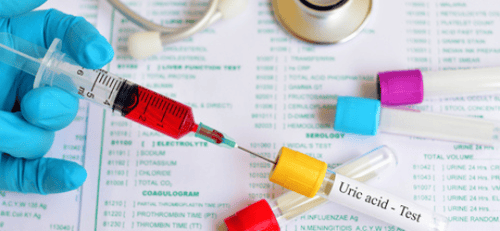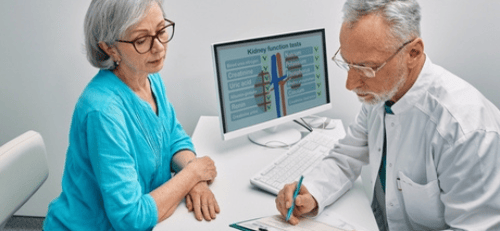Pap smears (柏氏抹片), also known as the Pap test (巴氏涂片) or cervical Smear, are an effective preventative measure for women against cervical cancer. According to the World Health Organisation, the Pap smear is the only test used in large populations that has been shown to reduce cervical cancer incidence and mortality.[1] This article aims to answer many common questions and concerns regarding Pap smears.
What is Pap Smear?
A Pap smear is a procedure that checks for the presence of cancerous and precancerous cells in the cervix. It should be considered as a health screening that allows for interventions to prevent cervical cancer and not as a diagnostic test for cervical cancer.
The test is considered an efficient tool for routine cervical screening because it proficiently detects the presence of abnormalities in a woman’s cervical tissue. At OT&P, we also offer pap smears for domestic helpers.
Is a Pap Smear Test Painful?
A Pap smear shouldn’t be painful. However, it can be uncomfortable, and the sensation has often been described as a soft pinch.
What Happens During a Pap Smear?
The doctor or nurse will insert an instrument (called a speculum) into the vagina to visualise the cervix. A spatula or brush will then be inserted through the speculum to collect cells for further microscopic examination.
 Source: Unites States National Cancer Institute
Source: Unites States National Cancer Institute
🔺Pap Smear Diagram
Are There Any Special Preparations Required?
To ensure that the test is most effective, it’s usually recommended that:
- Women avoid vaginal intercourse for two days as this may obscure abnormal cells in the microscopic examination.
- Douching is avoided and/or introducing foreign materials into the vaginal or cervical areas for two days before the examination. These may also obscure results. Foreign materials include, but are not limited to, lubes or vaginal medications, including spermicidal jellies and foams.
- Pap smears during a menstrual cycle should be rescheduled until after menstruation is complete.
Your doctor will also inform you about prior preparations for a Pap smear examination.
Who Performs a Pap Smear?
Pap smears are usually performed by a nurse or doctor. However, at OT&P clinics, this procedure is performed by our gynaecologists and family doctors.
How Long Does a Pap Smear Take?
The entire Pap smear procedure should take less than 20 minutes. At OT&P, we schedule a 30-minute appointment for a consultation, pelvic exam and pap smear.
What Are Other Tests Available to Screen for Cervical Cancer?
- HPV Test: HPV is human papillomavirus, and it is the virus that causes cervical cancer. An HPV test looks for the presence of the virus in the cells of the cervix.
- Combination Test: This involves doing a pap smear and an HPV test at the same time.
Pap smear results indicate the current risk of cervical cancer, and an HPV result can predict the future risk of cervical cancer. Interpreting both results together will provide a clear indication of risks and is a more effective screening method for cervical cancer.
How Does One Get HPV?
HPV is the name for a widespread group of viruses. Most people will get some HPV during their lives as it’s a common virus. It should not be something to feel ashamed or embarrassed about.
You can get HPV from any skin-to-skin contact in the genital area and not just from penetrative sex. For example:
- vaginal, oral or anal sex
- sharing sex toys
Some types of HPV (called "high-risk" types) can cause cervical cancer. In most cases, your body will get rid of HPV without causing any problems. But sometimes HPV can stay in your body for a long time.
If high-risk types of HPV stay in your body, they can cause changes to the cells in your cervix. These changes can develop into cervical cancer if not treated.
If you do not have a high-risk type of HPV, it is highly unlikely you will get cervical cancer, even if you have had abnormal cell changes in your cervix before. You can prevent HPV by getting the HPV vaccine.
Who Needs a Pap Smear?
The Hong Kong Government has the following recommendations for Pap smears:[5]
- In general, women aged 25 to 64 years, irrespective of marital status, are recommended to receive regular cervical cancer screening.
- Women below 25 years who have ever had sex and have increased risk factors for cervical cancer (such as multiple sexual partners, smoking, weakened immunity). It is recommended that they should seek a doctor’s advice concerning the need for cervical cancer screening.
- Women aged 65 years or above who have ever had sex and have never had a cervical cancer screening should be screened, even if they no longer have periods, aren’t sexually active or have had sterilisation. Menopause does not protect a woman from cervical cancer.
- Even women who’ve received the human papillomavirus (HPV) vaccination still need regular cervical smears. This is because HPV vaccination does not protect against the HPV types not included in the vaccine, nor against existing HPV infections.
If in doubt, please consult your doctor or you can do a health screen to ensure your health.
Pap Smear Q&A
Q: I have had only one sexual partner. Do I still need a Pap smear?
A: Yes, you can get HPV the first time you are sexually active. If you have the same partner or have not had sex for a long time, you can still have HPV without knowing it.
Q: I’m a lesbian and/or bi-sexual. Do I still need to do a Pap smear?
A: Yes, you are at risk of HPV and cervical cancer if you have had any sexual contact.
Q: I had a hysterectomy. Do I still need a Pap smear?
A: If you had a partial hysterectomy and the cervix was not removed, you will still need a pap smear.
Q: How often should a woman have a Pap smear?
A: This depends on your age and the previous results of your pap tests & HPV tests.
The general guideline follows screening at three-year intervals for pap smears and five-year intervals for a combination of pap smears and HPV tests, which are frequent enough to detect changes in the cervix.[2] This is also subject to the results of previous Pap smears. It's best to consult with your doctor on a case-to-case basis about how frequently you should receive a Pap smear.
Q: Where can I get a Pap smear?
A: In Hong Kong, Pap smears are available through public or private healthcare systems. We recommend that you check with your preferred healthcare provider beforehand for availability.
Q: What should I expect from my pap smear results?
A: A Pap smear can have one of two results: normal (negative) and abnormal (positive).
Normal
A normal Pap smear result shows that all cells collected during the examination are within normal limits with no abnormalities present. Around 90% of pap smears fall under normal readings.
Abnormal
An abnormal test result shows that there are changes in the cells of your cervix, but it does not necessarily indicate cancer. This result means that further testing is necessary. Anomalies sometimes occur during the Pap smear examination, and your doctor will advise on any necessary follow-ups.
Q: What happens when my Pap test results are abnormal?
A: An abnormal result can be due to various reasons, not necessarily from cancer. This can be from Low-Grade Squamous Intra-epithelial Lesion (LGSIL), High-Grade Squamous Intra-epithelial Lesion (HGSIL) to cervical cancer (CA Cervix). Another Pap test will likely be done to verify the results.
If you have not had an HPV test, your doctor may order one. They may be able to do this on the cells already taken during your pap smear test. Your doctor may also recommend a colposcopy for further investigation. This procedure is a detailed visual examination of the cervix using a microscope.
Sometimes, your doctor may also want to perform a LEEP (Loop Electrosurgical Excision Procedure) when colposcopy results read abnormal to remove these atypical cells from the cervix. The doctor may also take tiny tissue samples from the cervix, also known as a biopsy. Tissue from the biopsy will then be sent to a lab for further testing.
Q: Do I need a pap smear if I'm not sexually active?
If you have never been sexually active, your risk of (Human Papilloma Virus) HPV infection and cervical cancer is very low, and a Pap smear may not be necessary. However, if you were previously sexually active, even if it was years ago, you should still have regular Pap smears as HPV can remain dormant in your body for many years without symptoms.
Q: What are the things that can cause an abnormal pap smear result?
An abnormal Pap smear result can be caused by several factors beyond cancer, including HPV infection (the most common cause), cervical inflammation or infection (such as yeast infections, bacterial vaginosis, or sexually transmitted infections), hormonal changes (from pregnancy, menopause, or birth control), and recent sexual activity. Sometimes temporary cell changes from irritation, inflammation, or even the timing of your menstrual cycle can also lead to abnormal results. Your doctor may recommend repeating the test to determine exact causes, and whether any treatment is needed.
Although the abnormal cells are removed, it is important to continue doing smears afterwards to detect any future changes!
- Dr Zara Chan, Obstetrician and Gynaecology, OT&P Healthcare
References
- National Cancer Institute. n.d. NCI Dictionary Of Cancer Terms. [online] Available at: <https://www.cancer.gov/publications/dictionaries/cancer-terms/def/pap-smear> [Accessed 22 January 2021].
- womenshealth.gov. 2019. Pap And HPV Tests | Womenshealth.Gov. [online] Available at: <https://www.womenshealth.gov/a-z-topics/pap-hpv-tests> [Accessed 22 January 2021].
- Chp.gov.hk. 2020. Cervical Screening Programme. [online] Available at: <https://www.chp.gov.hk/files/pdf/3_booklet_english.pdf> [Accessed 22 January 2021].
- Cdc.gov. 2019. Screening for Cervical Cancer | CDC. [online] Available at: <https://www.cdc.gov/cervical-cancer/screening/?CDC_AAref_Val=https://www.cdc.gov/cancer/cervical/basic_info/test-results.htm> [Accessed 22 January 2021].
 Central General Practice
Central General Practice
 Repulse Bay
Repulse Bay
 Clearwater Bay
Clearwater Bay
 BodyWorX Clinic
BodyWorX Clinic
 Central Specialist Clinic
Central Specialist Clinic
 MindWorX Clinic
MindWorX Clinic
 Partner Clinics
Partner Clinics
 Family Clinic
Family Clinic
 OT&P Annerley Midwives Clinic
OT&P Annerley Midwives Clinic






